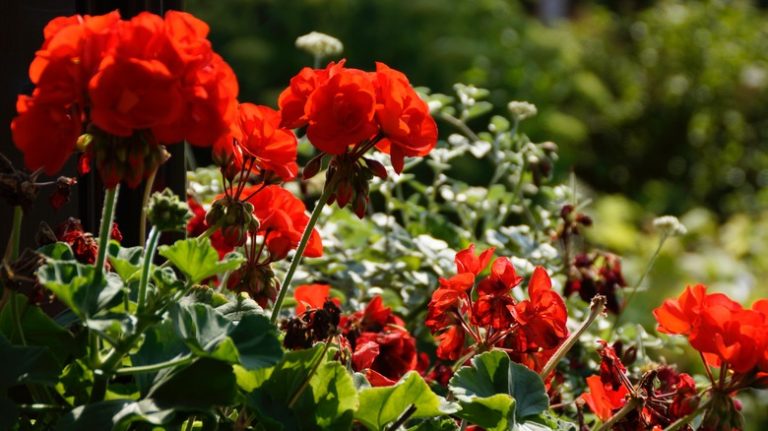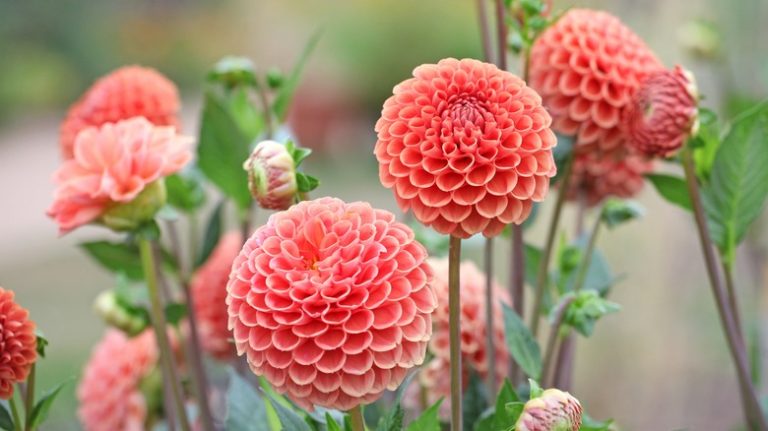The Chinese Lantern Plant, scientifically known as Physalis alkekengi, is a perennial herbaceous plant native to Southern Europe and has also been introduced to other parts of the world, including North America. It is widely grown for its attractive, lantern-shaped fruits that change from green to orange as they mature.
While the Chinese Lantern Plant may be visually appealing, it is important to be aware of its potential toxicity. The plant contains toxins that can cause a range of symptoms and reactions if ingested, especially by children and pets. The most common symptoms of Chinese Lantern Plant poisoning include gastrointestinal upset, such as nausea and vomiting, as well as skin irritation when the furry foliage or nettle-like stems are touched.
If you have Chinese Lantern Plants in your garden or are considering growing them, it is crucial to take steps to prevent poisoning. First, familiarize yourself with the plant and its toxic parts. The red fruits that resemble small tomatoes, often mistaken for tomatillos or peppers, contain the most toxins. Make sure to keep these out of reach of children and pets.
Furthermore, ensure the soil is well-drained and consider growing the plants in pots if you have limited space. This can help keep them contained and prevent accidental ingestion. If you suspect your child or pet has ingested any part of the Chinese Lantern Plant and is showing symptoms, seek veterinary or medical attention immediately. A veterinarian or medical professional will be able to provide the necessary treatment and information on how to administer care.
In some cases, alternative therapy such as activated charcoal may be used to absorb the toxins and prevent their absorption into the system. However, every poisoning case is different, so it is important to consult with a professional for the best course of action.
Remember, prevention is always better than intervention. Understanding the risks associated with Chinese Lantern Plant poisoning and taking the necessary precautions can help keep yourself, your children, and your pets safe and healthy.
Chinese Lantern Plant How to Grow and Care
The Chinese Lantern plant, scientifically known as Physalis alkekengi, is a fascinating plant to grow in your garden. This plant, which is native to China, has become popular worldwide due to its unique decorative fruits and attractive orange-red foliage. However, it’s important to note that this plant has toxic properties and should be approached with caution.
If you decide to grow Chinese Lantern plants, you should be aware of the potential toxicity. The severity of the toxicity varies among different varieties of the plant, but it’s always important to take safety precautions. This includes keeping the plant out of reach of children and pets, especially dogs, who may be more susceptible to the toxic effects.
When it comes to growing Chinese Lantern plants, you should start by learning about their preferred growing conditions. These plants thrive in full sun or light shade and prefer consistently moist soil. However, they can tolerate some drought once established. Regular watering is essential, but be careful not to overwater, as this can lead to root rot.
You can grow Chinese Lantern plants from seeds or by transplanting young plants. If you choose to start from seeds, sow them in pots or trays indoors in late winter or early spring. Once the danger of frost has passed, you can move the seedlings outdoors. Make sure to provide support for the growing plants, especially if you live in a windy area.
Chinese Lantern plants are generally low-maintenance and do not require much fertilizer. However, a light application of a balanced fertilizer in the spring can help promote healthy growth. Be careful not to over-fertilize, as this can result in excessive foliage growth at the expense of fruit production.
One of the reasons why Chinese Lantern plants have become so popular is because of their unique fruit. These orange-red lantern-shaped fruits can be used in various decorative arrangements and crafts. It’s important to note that the fruits are not edible and should not be ingested.
If you suspect any reaction to the plant, such as skin irritation or digestive discomfort, it’s important to seek medical assistance. Remember to save any parts of the plant that were ingested for identification purposes.
In general, Chinese Lantern plants can bring a touch of beauty to your garden. With proper care and attention, they can thrive and add visual interest to your outdoor space. Just make sure to take the necessary safety steps and keep them out of reach of children and pets.
The scientific name of Chinese Lantern Plant
The Chinese Lantern Plant, or Physalis alkekengi, is a perennial plant that is native to Asia and Eastern Europe. It is often cultivated for its beautiful orange lantern-like pods that encase the fruit. However, despite its aesthetic appeal, the Chinese Lantern Plant is actually toxic and can be harmful if ingested.
The toxic compounds found in the Chinese Lantern Plant are solanocapsine and solanidine, which belong to the same family as the toxins found in potatoes and tomatoes. The plant also contains solanum alkaloids such as solanin and chaconin, which are commonly found in other Solanum species. The Chinese Lantern Plant is also known as Solanum alkekengi or Solanum carolinense.
If you suspect that your dog has eaten any part of the Chinese Lantern Plant, it is important to seek veterinary care immediately. The symptoms of Chinese Lantern Plant poisoning in dogs can vary depending on the amount ingested and the individual dog’s sensitivity to the toxins. Some common signs might include tremors, drooling, vomiting, diarrhea, and seizures. In severe cases, it can even lead to death.
As there is no specific therapy for Chinese Lantern Plant poisoning, treatment aims to support the dog’s system and manage the symptoms. This may include inducing vomiting, administering activated charcoal to help absorb any remaining toxins in the stomach, and providing supportive care such as intravenous fluids and anti-seizure medications if necessary.
To prevent Chinese Lantern Plant poisoning, it is important to be mindful of where these plants are growing and educate yourself on the potential dangers. Chinese Lantern Plants are often grown for their beauty and can be found in gardens, pots, and flower beds. It is important to keep them out of reach of pets and children. If you are growing Chinese Lantern Plants yourself, make sure to wear gloves and wash your hands thoroughly after handling them to avoid any potential reaction.
It’s important to note that the Chinese Lantern Plant should not be confused with the edible Chinese Lantern Plant, Physalis peruviana, also known as Cape Gooseberry or Goldenberry. The fruits of the edible variety can be eaten fresh or dried and are popular in culinary dishes and as an alternative therapy for certain conditions. However, the toxic Chinese Lantern Plant should never be used for consumption.
Varieties of Chinese Lantern Plant
In the context of Chinese Lantern Plant toxicity, it is important to note that there are different varieties of this plant. The most commonly available variety is Physalis alkekengi, also known as the Chinese Lantern or Winter Cherry. This variety has beautiful orange-red lantern-like fruits in the center, which give the plant its name.
Chinese Lantern Plants are native to regions like China, Mexico, and the horse-chestnuts. They prefer well-drained soils and full sunlight. The plants have attractive foliage and are commonly used in gardens for their ornamental value.
The toxicity of the Chinese Lantern Plant is based on the ingestion of its parts, including the foliage, mature fruit, and seeds. Symptoms of poisoning may vary, but commonly include gastrointestinal upset, tremors, and in severe cases, seizures. If a dog or cat ingests any part of the plant, it should be taken to a veterinarian immediately for appropriate medical help.
To keep your pets safe, it is recommended to avoid keeping Chinese Lantern Plants in pots or in areas where dogs or cats have access. It is also important to provide well-drained soil and full sunlight for the plants to thrive. Additionally, keeping pets hydrated and monitoring their behavior can help in case of potential poisoning.
If you are interested in bringing the beauty of the Chinese Lantern Plant into your garden, it is essential to be aware of its potential toxicity and take necessary steps for safety. Always keep an eye on your pets when they are outdoors and administer fluids if any signs of poisoning are observed.
In general, Chinese Lantern Plants can be a safe and beautiful addition to any garden if proper precautions are taken. However, it is important to remember that the plant contains toxins that can be harmful if ingested by pets. If you have any concerns about the safety of the Chinese Lantern Plant around your pets, it is recommended to consult with a veterinarian for more information.
Tomatillo Physalis philadelphica
The tomatillo (Physalis philadelphica) is a species of plant in the Solanaceae family, which is widely grown for its edible fruits. Tomatillos are native to Mexico and are often used in Mexican cuisine, particularly in salsa verde. They are also known by other names, including husk tomato, Mexican groundcherry, and Mexican green tomato.
The tomatillo plant grows to about 3 feet in height and has a sprawling growth habit. It is a warm-season annual that requires full sun and well-drained soil. The plant produces lantern-like fruits that are usually green or yellow when ripe.
While the tomatillo is safe for human consumption, it is important to note that the plant can be toxic to pets, particularly dogs. All parts of the plant, including the foliage and fruits, contain toxic compounds called solanum alkaloids. Ingestion of these alkaloids can cause various symptoms in pets, including vomiting, diarrhea, weakness, and even convulsions.
If you have pets and want to grow tomatillos, it is important to take precautions to ensure their safety. This may include keeping the plants in a place that is inaccessible to your pets, training them to avoid the plants, or restricting their access to the garden altogether.
In addition to its toxic nature for pets, tomatillo plants also have some dangers for humans. Certain varieties of tomatillos, particularly the wild species Physalis carolinense, contain glycoalkaloids in their foliage, which can cause gastric distress if ingested in large quantities. However, the risk of toxicity from tomatillos grown in home gardens is generally limited.
In conclusion, tomatillo plants, while beautiful and useful in the kitchen, should be grown with caution, especially if you have pets. Take care to educate yourself on the potential dangers and take appropriate steps to keep your pets safe.




